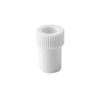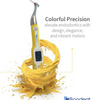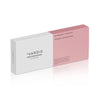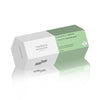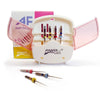
Education
Provide customers with details about banner images or content in your template.
FAQ
You often ask
How is steel crowns sterilized?
The sterilization of stainless steel crowns, used for restoring primary and permanent teeth, can be done using several effective methods
that ensure the proper level of hygiene and safety in a dental practice. One common method is chemical sterilization, which involves
disinfecting the crowns with specialized chemical agents that have a broad antimicrobial effect. These preparations eliminate
microorganisms from the surface of the crowns, but their effectiveness depends on strictly following the manufacturer's instructions,
including exposure time and storage conditions. Another popular solution is autoclave sterilization, a device that uses high temperature
and pressure to thoroughly clean dental tools and materials. Crowns are placed in special bags or containers and then subjected to
steam under pressure, effectively removing bacteria and viruses. Alternatively, steam sterilization, which uses saturated steam as a
disinfectant, is also a viable option. Thanks to high temperature and humidity, steam acts as an efficient biocidal agent, destroying
pathogens on the crown's surface. All of these methods—chemical, autoclave, and steam sterilization—are considered safe and
effective for preparing stainless steel crowns for reuse in pediatric dentistry.
Can steel crowns be shortened/trimmed?
Yes, steel crowns for primary and permanent teeth can be shortened, trimmed, and bent to better fit clinical conditions. If there is a need
to shorten the crown, specialized scissors for cutting steel crowns are used. These allow for precise adjustment of the crown’s length to
the anatomical conditions of the tooth, especially in more challenging cases. If shortening the crown affects its contour or clasp,
modeling pliers can be used. These tools allow for proper bending and shaping of the crown, restoring its functionality and retention
stability. Shortening steel crowns is a permissible and often necessary practice in everyday endodontic work. However, it is crucial that
all modifications be made in accordance with the manufacturer's instructions and using the appropriate dental tools, ensuring the
effectiveness and safety of the steel crown.
What cement should be used to cement steel crowns?
In pediatric dentistry, stainless steel crowns are most commonly cemented using glass ionomer or resin-based cements, with the
choice depending on the clinical situation and the dentist’s preferred technique. Glass ionomer cements, such as GC Fuji PLUS, are
widely recommended due to their strong adhesion to both tooth structure and metal surfaces, ensuring stable placement on both
primary and permanent teeth. Selecting the right cement ensures the crown's durability and the overall success of the treatment,
making compatibility with the crown type and workflow essential.
How durable are steel crowns for primary and permanent teeth?
The durability of stainless steel crowns used in pediatric dentistry depends on many factors – including the quality of the crown, the conditions in the patient’s oral cavity, their habits (e.g., bruxism), as well as hygiene and regular dental check-ups. In general, stainless steel crowns for primary teeth are considered highly durable, but their lifespan may vary depending on the case.
Under favorable conditions, a stainless steel crown can last several to over a dozen years if properly placed and not exposed to excessive forces such as teeth grinding. However, it’s important to remember that risk factors – such as bruxism, poor oral hygiene, or a sugar-rich diet – can significantly shorten the crown’s lifespan.
To maintain the durability of stainless steel crowns, it is essential to regularly visit a pediatric dentist who can assess their condition and plan adjustments or replacement if necessary. The durability of each crown is individual, so it is impossible to specify exactly how long it will last – what matters most is regular monitoring and proper hygiene.

Banner with image
Provide customers with details about banner images or content in your template.
Collapsible content
Is pulp therapy necessary when using steel crowns?
Pulp therapy is not always required when placing stainless steel crowns; it depends on the clinical condition of the tooth. In cases of
deep caries or inflammation, it may be necessary, but it is not performed routinely. The final decision is made by the dentist based on
pulp vitality and root condition. Stainless steel crowns are primarily used to restore severely damaged primary teeth, and pulp treatment
is done only if medically indicated.
What are SSC NuSmile and SHINSHUNG steel crowns made of?
SSC NuSmile and SHINSHUNG crowns are made from 316L stainless steel, an austenitic alloy known for its durability and corrosion
resistance. The "316" indicates approximately 16% chromium content, and the "L" denotes a low-carbon variant, which minimizes
corrosion risk and enhances material strength. 316L stainless steel is highly resistant to moisture, acids, and chemicals, making it well-
suited for the oral environment. It is biocompatible, meaning it is safe for contact with biological tissues and does not trigger allergic
reactions or interact negatively with the body. It also offers high compressive strength and resistance to chewing forces, making it ideal
for crowns on primary teeth. These qualities ensure durability, safety, and comfort for pediatric dental applications.
How to properly cement a zirconium crown?
Cementing zirconia crowns, such as NuSmile ZR, requires following several key principles that affect the durability and effectiveness of
the procedure. The most important factor is preventing contamination of the crown's inner surface with saliva or blood, as even a small
amount can significantly reduce the cement's adhesion.
Step 1: Fitting the crown – using Try-In crowns
To avoid saliva contact, NuSmile has developed special Try-In crowns, identical in size and shape, for multiple fittings. Try-In crowns
can be sterilized and reused, ensuring a safe solution during trials.
Step 2: Cleaning the surface in case of contamination
If the inner surface of the NuSmile ZR crown gets contaminated, it should be cleaned by one of the following methods:
● using aluminum oxide (Al₂O₃),
● or using Ivoclean, a cleaner designed for cleaning prosthetic work.
Step 3: Choosing the cement
For cementing zirconia crowns, glass ionomer cements and resin cements are commonly used, depending on the clinical situation and
the dentist's preference. One recommended material is GC Fuji PLUS – a hybrid cement combining the properties of glass ionomers and
composite resins, providing strong adhesion.
Step 4: Pulp therapy
If pulp therapy was performed and a material containing eugenol was used, it should be covered with glass ionomer before cementing
unless the cement used also utilizes glass ionomer technology.
Step 5: Seating the crown
The NuSmile ZR crown should fit passively. Once seated, it should be gently held in place until the cement self-hardens.
Will zirconia crowns fit the same way as steel crowns?
Zirconia crowns, such as NuSmile ZR, are seated similarly to steel crowns, but they require slightly different tooth preparation.
Compared to steel crowns, preparation for zirconia crowns is more extensive around the entire circumference of the tooth, requiring
about 20% more reduction of hard tissues. The exception is occlusal reduction, which is comparable to that performed with steel
crowns.
For NuSmile ZR crowns, it's essential to avoid the "snap fit" effect (the characteristic click when seating), as this may cause microcracks
or stresses in the zirconia material. The zirconia crown should have a passive fit, and its position should be maintained until the cement
self-hardens.
The key to proper seating of a zirconia crown is always ensuring that the tooth preparation matches the shape of the crown, not the other
way around.
Is pulp therapy necessary when using steel crowns?
The need for pulp therapy when placing steel crowns on primary teeth depends on the individual clinical conditions of the patient. Pulp
treatment may be required in cases of advanced decay or other pathologies affecting the pulp, but it is not routinely necessary when
using steel crowns.
The state of the pulp should be evaluated by a pediatric dentist, who will make the decision about possible endodontic treatment based
on clinical and radiological examination. Steel crowns are often used to restore primary teeth with extensive decay, but pulp therapy is
only applied when medically indicated.
In summary, pulp treatment is not required in all cases of steel crown placement, but it should be considered if symptoms of pulp
inflammation or necrosis are present.
Is pulp therapy necessary when using zirconia crowns?
Similar to steel crowns, pulp therapy is generally not necessary when placing NuSmile ZR zirconia crowns. It may only be indicated if
there is advanced decay or other pathological changes in the tooth pulp.
The decision regarding possible endodontic treatment should always be made by the dentist based on the clinical assessment.
Video Tutorials
Watch professional video tutorials and learn the best practices for using dental products. Clear instructions, expert tips, and real clinical
cases – everything you need in one place.

